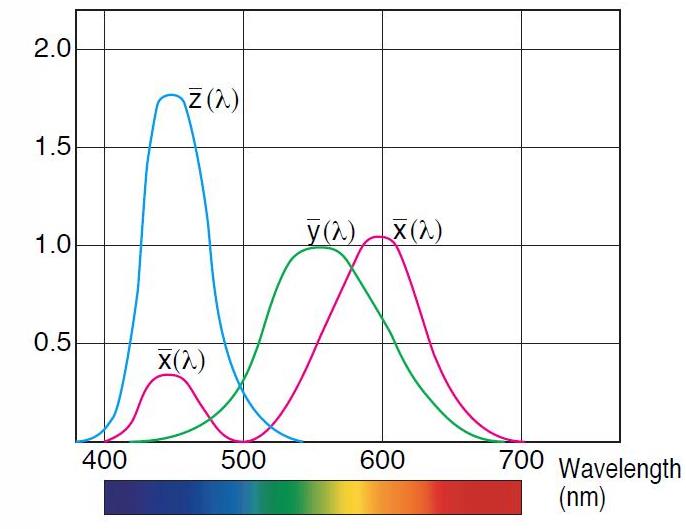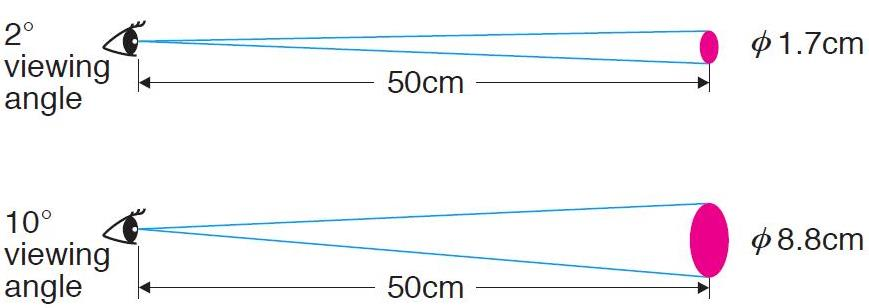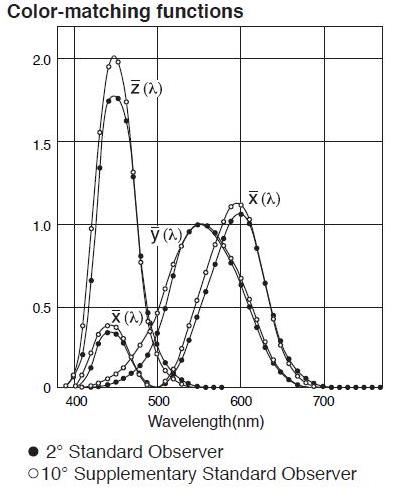Understanding Standard Observers in Color Measurement
Human Color Perception
Color is perceived when light bounces off of, or reflects from, an object and stimulates the cones in our eyes. Every moment we are awake and wide-eyed, these cones are sending messages to our brain to translate what color we are seeing in front of us. According to the three-component theory, our eyes only sense, or respond to, the three primary colors of light – red, green, and blue. Every color in the visible spectrum is a mixture of any of these three (e.g., combining red and blue produces purple).
To quantify an object’s color using a standardized method, the human eye’s (observer) response to these colors must be included in the calculation. In the 1920s, two researchers from the United Kingdom conducted an experiment to determine this using light, a small hole, and the visual perception of the human eye. The outcome was a significant step forward in defining color numerically.
Establishing Standard Observers
In 1927, physicists John Guild and David Wright gathered subjects and performed a color matching experiment to determine how the average person perceives color. Subjects were asked to look through a hole and match each color in the spectrum by combining various intensities of red, green, and blue lights. The hole only allowed a 2-degree field of view (similar to looking at one’s thumbnail from arm’s length distance or equivalent to a 1.7cm circle from a 50cm distance) because of the belief that our color-sensing cones were located in a 2-degree arc in the fovea, a region of the retina.
Based on the responses in this experiment, values were plotted to reflect how the average human eye senses the colors in the spectrum with a 2-degree field of view (see Figure 1). Each curve – bar x, bar y, and bar z – represents one of the three primary colors of light. Referred to as the 2 Degree Standard Observer, CIE published this as a mathematical function in 1931 to be used in the quantification of color and standardize the way color is evaluated.

Figure 1
The numerical color values of an object calculated using a 2 Degree Standard Observer function do not always correlate well with the human eye’s visual assessment of color, however. In the 1960s, it was realized that the human eye has a wider field of view than previously thought. Because of this, the color matching experiment was conducted again using a hole allowing a 10-degree field of view (similar to looking at one’s palm from arm’s length distance or equivalent to an 8.8cm circle from a 50cm distance) instead of a 2-degree field of view. Showing subtle differences from the first experiment, the function was adjusted and published in 1964 as a 10 Degree Supplementary Standard Observer (see Figure 2).
Figure 2
2 Degree vs. 10 Degree Standard Observers
Used when evaluating the color of an object, CIE standard observers help correlate instrumental color measurements to human visual assessments. The 1964 10 Degree Supplementary Standard Observer is considered to be more representative of how the human eye perceives color. Recommended by CIE, this larger field of view is commonly used with spectrophotometers for formulating and evaluating the color of various types of samples. Colorimeters, on the other hand, typically use a 2 Degree Standard Observer. This smaller field of view is common within quality control and other color evaluation procedures, particularly for food applications.
Like this article? Click here to sign up for our monthly Color Trends & Technology newsletter to stay updated on the element of color, best practices for controlling and evaluating the color of objects, educational seminars, and advanced technology for research and manufacturing environments.
The technological leader in color and light measurement solutions, Konica Minolta Sensing Americas helps organizations formulate, evaluate, and control color to meet product quality and operational goals more efficiently.












